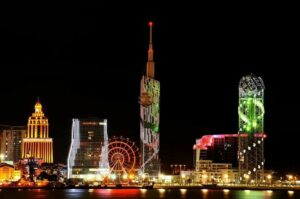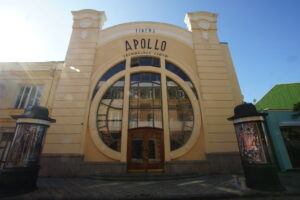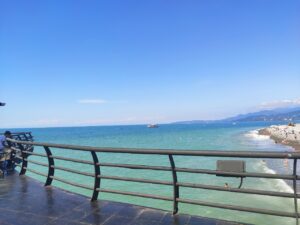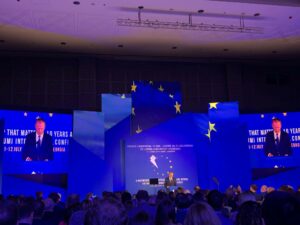
How Does Architecture Impact European way in Eastern Partner city Batumi
One of our greatest inspirations is the architect Alvar Aalto. He once said that ”the ultimate goal of the architect is to create a paradise. Every house, every product of architecture should be a fruit of our endeavor to build an earthly paradise for people. This is why culture is so central to the architectural process. People are at the center. Architecture is one proof of the development of human civilization that has changed related to the circumstances at that time. The development of human civilization cannot be separated from the supported development of the culture. In other words, architecture which is born in one place is a cultural manifestation in that place.”
Europe certainly has a long tradition of architecture extending back to ancient times, and those traditions have led to unique solutions to architectural problems in the various nations of Europe. It is evident that successful architecture takes inspiration from its physical and historical context. “There is a certain tradition, history, and continuity that you can read in European architecture,” mentioned Spela Videcnik, architect and design critic.
Art Nouveau was a vibrant but short-lived phenomenon that flourished between 1890 and 1910 It touched on all the visual arts: fashion and furniture, pots and paintings, books and buildings. No object was too small or too large, too precious or too ordinary to be shaped by the designer working according to the ideals, moral and social as well as aesthetic associated with the Art Nouveau Batumi.
Following the discovery of oil in Azerbaijan in the mid 19th century, massive pipelines were laid throughout Georgia to bring oil to Europe. Money from the oil boom financed international style architecture all around the country. Hundreds of elegant fin de siècle buildings were built in Batumi, a large port on the Black Sea, bringing a European vibe to this charming city. Although in style neoclassical, their colours and shapes were far off the usual grid. In the meantime Tbilisi was a Mecca for numerous Art Nouveau artists. The best example of that exciting period is the cosmopolitan David Aghmashenebeli Avenue. Georgia’s Batumi is renowned as an Interesting European city one shouldn’t miss the chance to explore.
A sunset walk on Batumi Boulevard and the adjacent parklands is a joy: designed and founded in 1881 by a Frenchman, Michel D’Alfons, it hugs the waterfront and its elegant formal plantings, cascades of flowers and shaded greens are dotted with cafes, table tennis, restaurants and rides for children. and its parks are as beautiful and graceful as any in Paris or London. Batumi city also hosted the 16th Batumi International Conference Dedicated to the 10th Anniversary of Eastern Partnership.
So if you ever decide to visit Batumi, you should have a walk in Europe Square. It is also called Era Square. The square, surrounded by XIX-XX century architecture, is one of the city’s attractions. Here stands a statue of Medea, which holds a symbol of the glory and cultural development of old Colchis – the golden fleece. The large fountain and the beautiful buildings of past centuries make this place attractive. Hotels, restaurants and cafés are located around the square, where you can have a pleasant rest and taste the most delicious dishes. Here you can also visit the Batumi Circus and enjoy the magical sights. Europe Square is one of the most wonderful places in Batumi for relaxation and fun. Feel free to feel Europe in Adjara, Batumi.
Georgia is a very interesting country. You can explore old and beautiful designs in the capital city, Tbilisi.
Tbilisi is a historical city as it has been the capital of Georgia since the V century. City’s architecture is an authentic combination of different cultures. Here you can find Sulphur bathes called Abanotubani, contemporary skyscrapers, Soviet-era buildings, and traditional Georgian houses with colorful wooden balconies. The stylistic variety of architecture is really impressive. So visit Georgia, and we will show you the most beautiful places!
What about the House of Georgia?

Among Tbilisi’s distinguished buildings that have endured centuries is Writer’s House of Georgia – a perfect blend of European and Georgian architectural styles. The Art-Nouveau mansion once belonged to David Sarajishvili – a famous philanthropist, founder of Georgian brandy production, Doctor of chemistry and philosophy. He commissioned the construction of the house for the 25th anniversary of his wedding in 1905. German architect Carl Zaar, in collaboration with Aleksander Ozerov and Korneli Tatishev planned the building, while exquisite wooden interior belongs to the Georgian craftsman Ilia Mamatsashvili. The terrace of the house is designed by ceramic tiles of the famous Villeroy & Boch Company. Tiles with similar forms and patterns were an extreme rarity and were produced only on special orders. Since the day of its construction, this building has been an important center of the city’s cultural life and still continues to be a place where the writers and artists are actively involved in art processes.
Some people compare some parts of Tbilisi to Paris and Barcelona. So if you really want to feel European spirit with natural views and meet kind people then you should visit Georgia. Furthermore, you have the chance to explore Batumi, relax in Black Sea resort and enjoy tasty Georgian wine in any Skyscraper. Do not forget to invite your friends, too!
LATEST

How you can help the planet every day
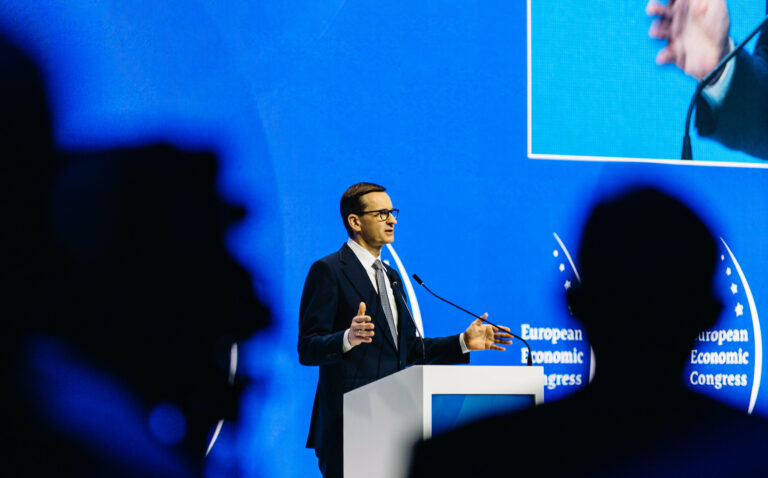
Building Europe: Poland’s experience of joining the European Union and lessons for Ukraine
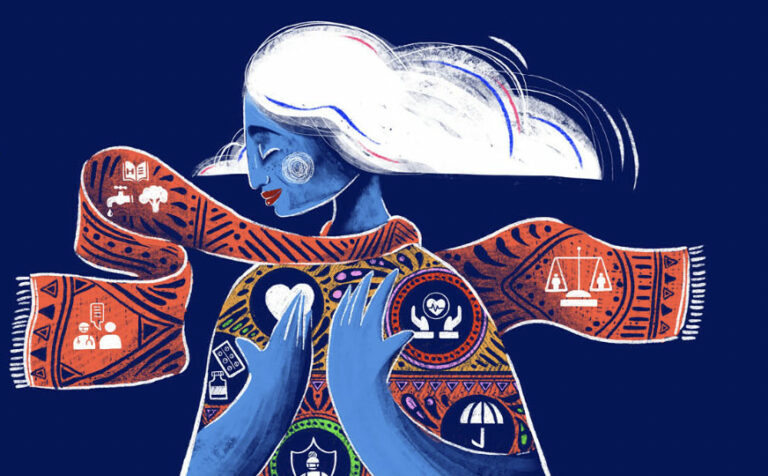
World Health Day 2024: My Health, My Right

EUREKA MEETS EUROPE – opportunities to develop and study. My experience

Can you wear pink in the workplace?
More campaign pages:
Interested in the latest news and opportunities?
This website is managed by the EU-funded Regional Communication Programme for the Eastern Neighbourhood ('EU NEIGHBOURS east’), which complements and supports the communication of the Delegations of the European Union in the Eastern partner countries, and works under the guidance of the European Commission’s Directorate-General for Neighbourhood Policy and Enlargement Negotiations, and the European External Action Service. EU NEIGHBOURS east is implemented by a GOPA PACE-led consortium. It is part of the larger Neighbourhood Communication Programme (2020-2024) for the EU's Eastern and Southern Neighbourhood, which also includes 'EU NEIGHBOURS south’ project that runs the EU Neighbours portal.

The information on this site is subject to a Disclaimer and Protection of personal data. © European Union,
